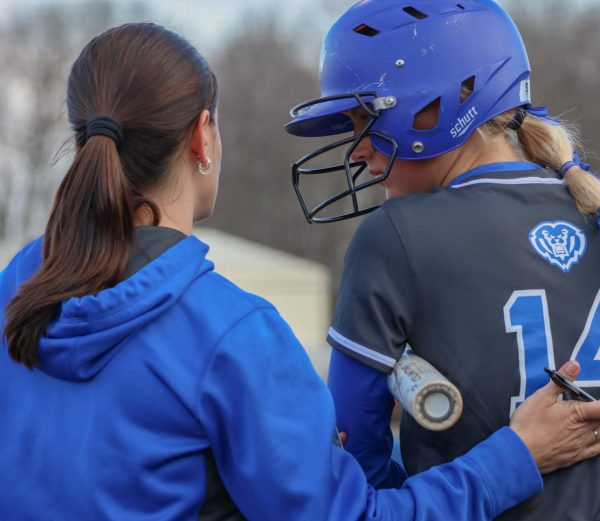Waste of a Generation
April 19, 2023
Is Technology Throwing Away the Future?
The Internet is a large part of most of our lives. Given the options, who would not want to be on their phone all day, every day? Communicating with friends through Snapchat, watching entertainment through Netflix or creating content through YouTube, TikTok and Instagram, people have access to do whatever they want. The Internet has something for everyone, but has technology affected Gen-Z a little too much? Is it pushing this generation to the point where they are wasting away?
Some experts feel that it is. News Hofstra’s, a university that is most known for highly ranked education argues, “When you’re getting a device at five years old, you haven’t developed that ability to regulate yet, [making it] easier to slip into the impulsivity of using the technology and having a harder time breaking away from it.”
In this generation, most younger kids are watching more TV than going outside and exercising. Bingham Memorial Hospital states that obesity rates are increasing due to inactivity, technology and poor eating habits. Kids and teenagers are not as active as they used to be, causing them to get less exercise. Many people call them ‘lazy’ and ‘couch potatoes’ due to this fact. Technology has many students glued to their devices, suggesting they are wasting the day. They could be going on a walk, but instead they are lying in bed and eating junk food.
To analyze how this impacts our students, @hsenews did an Instagram survey on technology in March 2023. The results of the study showed that most of the HSE’s survey participants got their first device between five to seven years old, which studies suggest can be very harmful and damaging to kids productivity and can negatively affect their learning ability. The survey also concluded that most HSE students spend five hours or more on social media, with the most used apps being TikTok, Instagram and YouTube.
In addition, the poll revealed that seniors are aware of how damaging social media is. From their responses, they spend between two to three hours daily on social media apps like Snapchat and Instagram. They also admit, while doing their homework, that they are quicker to pick up their phone when a notification appears, showing how addicting social media is. According to Jefferson Health, “Adolescence is the second biggest period of growth in the brain. Because teens’ brains and social skills are rapidly developing, they are particularly susceptible to the addictiveness of social media.” This implies that it’s not entirely the teens’ fault, because most of them were exposed to technology early, making it harder to break away from the screen. Although most of them were kids when introduced to technology, they can still turn it into a healthy relationship with technology along with limits.
Technology has given people ways to interact without talking face-to-face, meaning communication skills are hugely affected by technology. Instead of learning how to make eye contact and keep a conversation going, a lot of kids are growing up antisocial and not knowing those essential capabilities that prepare them for school, college and most importantly, jobs.
Overall, because the majority of Gen Z is online, they are facing consequences to their development. Too much technology causes disassociation from reality and can create unrealistic standards. Apps like Instagram only show the side that the person posting wants people to see. Being constantly surrounded by photo editing and filters, teenagers do not know what is real and fake, which can tarnish self-esteem and more. It would best for us to take a step away from excessive technology use for our future. Getting fresh air and meeting people face-to-face can greatly help this generation with the problems that social media causes in the long run.
Differences Made
Many people doubt how the younger generation can create change in the world. While what kids can do in their communities is sometimes limited, their voices and actions do matter and can spark change to take place across the world. Students often try to make an active change in society. Students such as Malala Yousafzai, Greta Thunberg and Charitie Ropati have already made humongous impacts on their local and global communities.
Malala Yousafzai was born in Mingora on July 12, 1997. She is a Pakistani activist who spoke out against the Taliban while they were trying to prohibit the education of girls. Her activism first started when she was 11 years old. When she was 15, she survived an assassination attempt. On her 16th birthday she made a very impactful speech, in which Yousafzai said “One child, one teacher, one book and one pen can change the world. Education is the only solution. Education first.” Yousafzai now lives in Birmingham and is still an active advocate for children’s rights, the importance of education and she inspires many young girls to create change in their communities.
Greta Thunberg was born January 3, 2003. She is a Swedish environmental activist who rivals world leaders and their actions on climate change. In 2018, while she was 15, Thunberg started a movement called Fridays for Future, which organizes protests and strikes to spread awareness about climate change and environmental issues. The organization spread information about the state of the world. Friday for Future states, “The capital system continuously puts profit over people. Corporation’s greed for more profit is driving the destruction of ecosystem and the climate.” She has written 20 novels relating to the importance of environmental activism. Thunberg has been an inspiration to many other teens who care about the environment and that speaking up can make a change and influence how others see the world.
Charitie Ropati started her activism at 18. She is an educational and environmental activist who inspires to include accurate education of Indigenous culture in education. Ropati herself is a member of the Native Village of Kongiganak, Alaska and she has developed an inclusive curriculum that is taught in select high schools. Ropati helped create a policy for the Anchorage School District in Alaska that students were allowed to wear Indigenous regalia when graduating. This regalia includes sacred clothing, accessories and other artifacts that are used during ceremonies. After this massive step forward for her community, she is now a student in Griffin Lab at Columbia University and studies permafrost and cultural resilience in indigenous groups. Ropati shows how important it is to speak out about things that are not right and can put others in a beginning light.
These students have caused change in their communities and the world. They have inspired many to speak out about things they are passionate about. It is important to remember how much even small voices can start something bigger. The younger generation can make a difference and can change the world for the better if people speak up and say when something is unjust.
For the Future
Famous examples do not have to be the only ones, either. Throughout HSE, there are many groups that are working towards building a better and brighter future for both them and the community around them. Some groups are simply a meeting place for members of a minority group, like Gender & Sexuality Alliance or Black Student Union. Others, like Key Club, are geared towards fundraising and organizing product drives for sanitary products or canned food.
“Key Club is a student-led, high school organization,” Kenneth Link said. “Our members make the world a better place through service within the school and in the community.”
Key Club is not only responsible for the spring and fall blood drives, but also for the Adopt-a-Family program in December and the annual Melanoma Awareness week. While there are many ways for students to benefit non-profit organizations, advocating for themselves and issues they care about is another topic.
Bring Change to Mind, sponsored by Leslie Caliz, focuses on mental health awareness and taking care of student’s mental health within the school.
“I see that we are making an impact on the level of comfort students have with conversations related to mental health,” Caliz said. “There is a lot to be learned from each other and I am happy we have the opportunity to support each other and celebrate successes in mental health.”
The discussion of social issues affecting students takes place outside of clubs or groups, as well. Many protests have been led by students; freedom of expression in schools was designated as a constitutional right because Mary Beth Tinker, along with her brother and friends, protested the Vietnam War by wearing black armbands to school. Students have recently led protests advocating for gun control in Tennessee after the Covenant school shooting.
No matter the topic, one thing remains constant in student-led protests: using the resources around them. The internet holds a wealth of information and perspectives that can provide further context and lead to solutions never thought of before.
“Students must stay informed and up to date with what is going on around them.” Caliz said. “They must take opportunities seriously and do so with urgency.”
Students of this generation have a unique opportunity to contribute to future history books. Whether this time is remembered with indifference or with pride is decided now.
Story By Annabella Burns, Jordyn Grant and Aubrey Matasovsky











